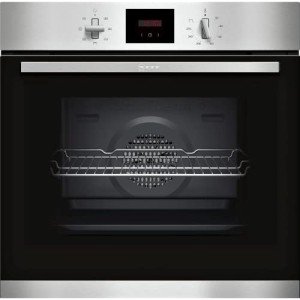
Cheapest Fan Oven
Add a review FollowOverview
-
Founded Date October 7, 1991
-
Sectors Support Worker
-
Posted Jobs 0
-
Viewed 7
Company Description
You’ll Be Unable To Guess Oven For Kitchen’s Tricks
Choosing the Right Oven for Your Kitchen: A Comprehensive Guide
Ovens have been a cornerstone of cooking ventures for centuries, offering a vital device for both amateur cooks and expert chefs alike. As modern cooking areas progress, so too do the kinds of ovens available, each designed to fulfill the varied needs of cooking enthusiasts. The following guide provides a detailed overview of various oven types, their features, and factors to consider to bear in mind when selecting the best oven for your kitchen.
Types of Ovens
When considering an oven for your kitchen, it is necessary to comprehend the different types offered. Each kind of oven has unique attributes that can influence cooking techniques and total kitchen functionality.
1. Standard Ovens
Conventional ovens are the most basic type, often discovered in homes worldwide. They generally utilize either gas or electric power and offer a simple cooking technique.
- Gas Ovens: Utilize natural gas or propane, providing instant heat and excellent temperature level control.
- Electric Ovens: Use electric coils or a heating element, frequently providing more even heat distribution.
2. Convection Ovens
Convection ovens are developed with a built-in fan that flows hot air around the food, leading to faster cooking times and more even results.
- Benefits:
- Reduced cooking times (up to 25% faster)
- Even baking and browning
- Drawbacks:
- May require adjustments to dishes (lower temperature level or shorter time)
3. Wall Ovens
Wall ovens are a popular choice in contemporary cooking areas, as they can be set up at eye level, conserving counter space and increasing ease of access.
- Single Wall Ovens: Ideal for smaller kitchens, ideal for daily cooking.
- Double Wall Ovens: Increase capacity for large meals and numerous dishes.
4. Range Ovens
Range ovens integrate both a cooking range (with burners) and an oven, providing a compact solution for kitchens with minimal area.
- Freestanding Ranges: Standalone units that can suit any kitchen design.
- Slide-in Ranges: Designed to fit comfortably in between cabinets for a more integrated look.
5. Steam Ovens
Steam ovens use steam rather of dry heat, protecting moisture and nutrients in food.
- Benefits:
- Healthier cooking alternative
- Perfect for baking bread and cooking veggies
- Considerations:
- May require extra actions for particular meals
Key Features to Consider
When selecting an oven, consider the following functions that can improve cooking experiences:
| Feature | Description |
|---|---|
| Size | Guarantee it fits your kitchen area and meets your cooking needs. |
| Self-Cleaning | Makes maintenance easier, removing the requirement for manual scrubbing. |
| Smart Technology | Ovens with Wi-Fi connectivity can streamline cooking through apps. |
| Temperature Range | A larger range can enhance cooking flexibility. |
| Security Features | Functions such as auto shut-off can boost kitchen security. |
Tips for Choosing the Right Oven
Selecting the right oven can often be a difficult task. Here are a number of tips to streamline the procedure:
-
Identify Your Cooking Habits: Consider how often you prepare and the types of meals you prepare. For circumstances, avid bakers may prefer a convection oven for even baking, while those who prepare roasts might lean towards a standard oven.
-
Procedure Your Space: Before buying, measure the location where the oven will be placed to ensure it fits easily with your kitchen style.
-
Consider Your Budget: Ovens range commonly in price. It is essential to set a budget plan and think about the long-term value of the appliance.
-
Read Reviews: Online evaluations can provide insight into a model’s efficiency and dependability gradually.
-
Check Energy Ratings: Energy-efficient models can save you cash on energy costs in the long run.
Upkeep and Care
To take full advantage of the life expectancy of your oven, appropriate upkeep is key. Follow these simple steps:
- Regular Cleaning: Make cleaning a practice after each usage, and make use of self-cleaning features when readily available.
- Examine Seals: Ensure that the door seals firmly; this avoids heat loss during cooking.
- Calibration: Periodically inspect the oven temperature level for accuracy. An oven thermometer can aid with this.
- Professional Servicing: Schedule routine maintenance consult an expert to make sure the appliance operates efficiently.
Frequently asked questions
What is the very best type of oven for a small kitchen?
For small kitchens, wall ovens or compact range ovens are exceptional alternatives as they use up less space and can be installed to suit available kitchen cabinetry.
How do I preserve a gas oven?
Frequently check the burners for clogs and guarantee that the oven’s interior is cleaned up to avoid accumulation from spills and splatters.
Can I bake and broil in the same oven?
Yes, the majority of contemporary ovens allow for both functions. Inspect the user manual for particular instructions on running your oven.
What should I do if my oven isn’t heating up properly?
Initially, inspect if it’s properly plugged in or if the gas is streaming. If concerns continue, speak with a professional to diagnose prospective issues.
Is it worth buying a clever oven?
If cooking benefit and the most recent innovation interest you, investing in a wise Oven For Kitchen can be rewarding, as they provide a range of boosted cooking functions.
Selecting the ideal oven for your kitchen is vital to both the performance and satisfaction of your cooking experience. By considering the numerous kinds of ovens, essential features, and maintenance pointers, consumers can make an informed decision that satisfies their cooking requirements and choices. Whether you are a casual cook or an enthusiast, the ideal oven can significantly elevate your cooking experiences.



